Discover the joy of transforming your outdoor space into a stunning haven with our guide, “8 Garden Canopy Ideas for Your Next Project.” Whether you’re a novice just dipping your toes into the world of outdoor design or a seasoned pro looking to elevate your garden’s charm, this list is packed with inspiration and know-how to help you create a shaded sanctuary that suits your style and needs.
With practical tips and creative ideas, this guide empowers you to enhance your outdoor living experience, making it both beautiful and functional. Imagine sipping your morning coffee under a stylish pergola or hosting a dinner party beneath a lush, leafy canopy. Let us help you take the first step toward creating an inviting oasis that promises countless moments of relaxation and joy.
Incorporate Adjustable Shade Features
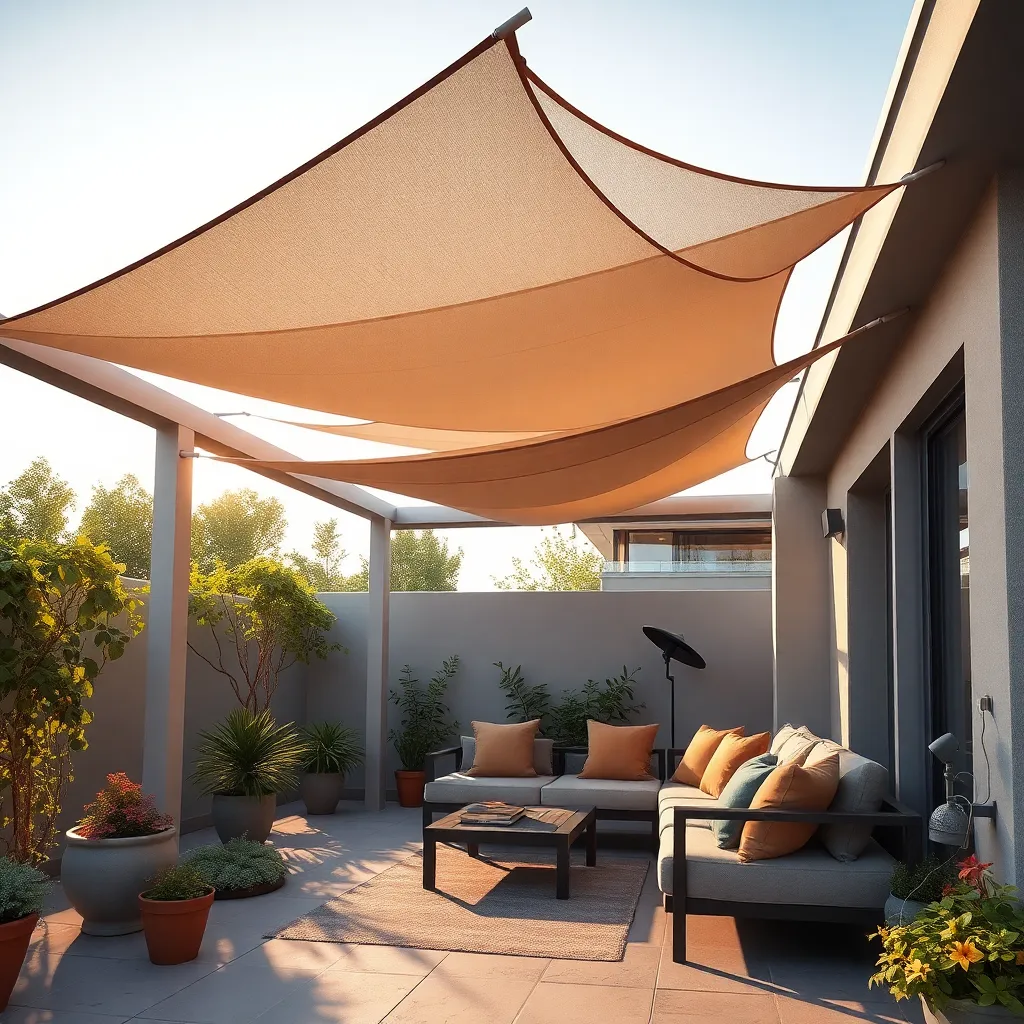
To enhance your garden canopy, consider incorporating adjustable shade features that allow you to control the amount of sunlight that filters through. Opt for retractable awnings or pergolas with adjustable slats, which can be tailored to your preferred level of shade. For beginners, a simple retractable fabric canopy can be an excellent starting point, providing flexibility and ease of installation. Ensure the materials are weather-resistant, such as UV-treated polyester or acrylic fabrics, to withstand the elements and maintain durability.
For those with advanced DIY skills, installing a motorized system can add convenience, allowing you to adjust your canopy with the touch of a button. Consider using materials like aluminum or treated wood for the frame, offering both sturdiness and aesthetic appeal. When designing, aim for a canopy height of around 8 to 10 feet to create a spacious feel while ensuring optimal ventilation. To enhance durability, use corrosion-resistant hardware and consider integrating weather sensors that automatically adjust the canopy based on sunlight or wind conditions.
Utilize Eco-Friendly Canopy Materials
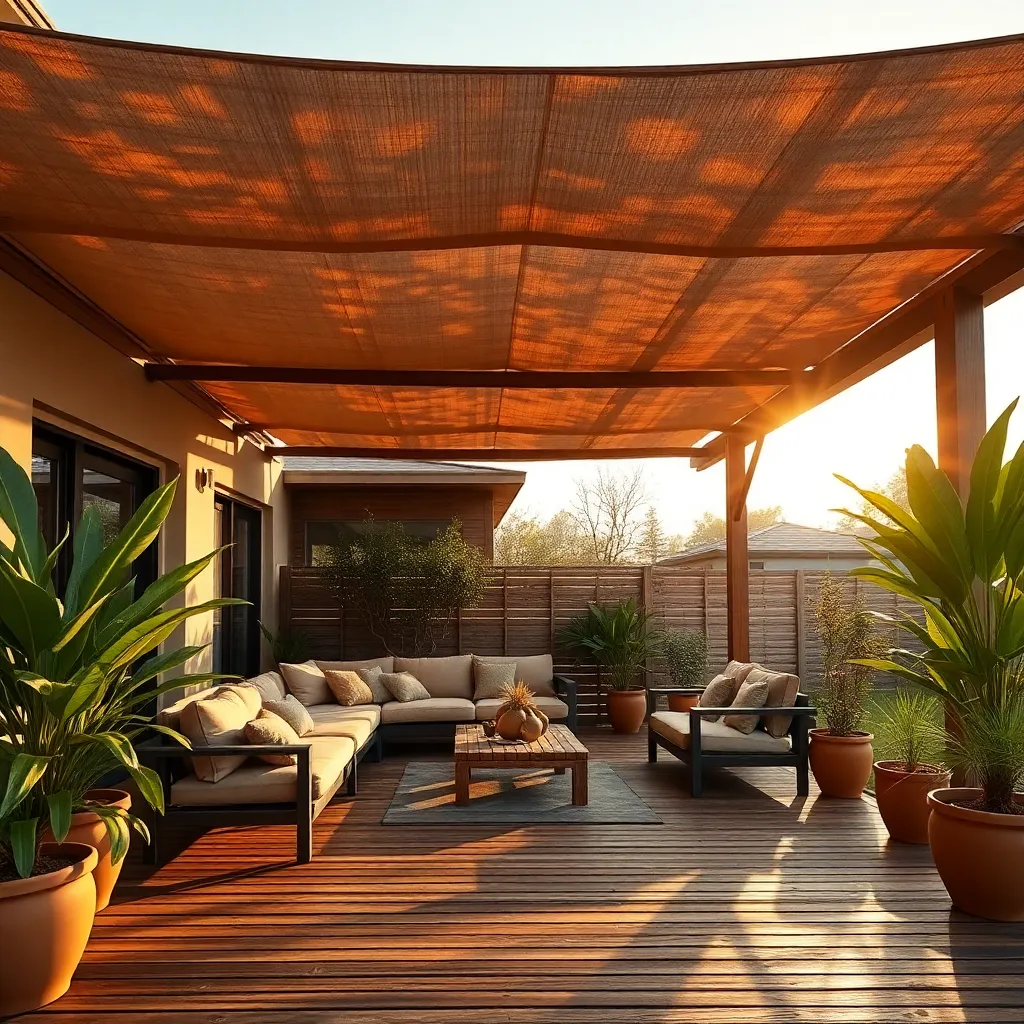
Opting for eco-friendly canopy materials is a smart choice for sustainable garden projects. Consider using **bamboo**, an excellent renewable resource that is both sturdy and stylish. It’s perfect for creating a natural-look structure that blends seamlessly with outdoor spaces. For a more durable option, look to **recycled metal** or **certified sustainable wood**, which offer longevity and a reduced environmental impact. Beginners can start with simple designs using bamboo poles, while experienced DIYers might explore custom metal frames with integrated green roofs for added insulation and biodiversity.
To further enhance your eco-friendly canopy, consider integrating **recycled fabric** or **organic cotton canvas** as the shading material. These fabrics not only provide effective sun protection but also contribute to a lower carbon footprint. When choosing dimensions, aim for a height of at least 7 feet to ensure comfort and airflow, and allow for a canopy width that covers seating or dining areas adequately. For an advanced touch, incorporate **solar panels** on top of your canopy to harness renewable energy, powering garden lights or charging stations. This approach not only boosts your garden’s sustainability but also adds a modern, tech-savvy edge to your outdoor retreat.
Choose Vibrant Weather-Resistant Fabrics
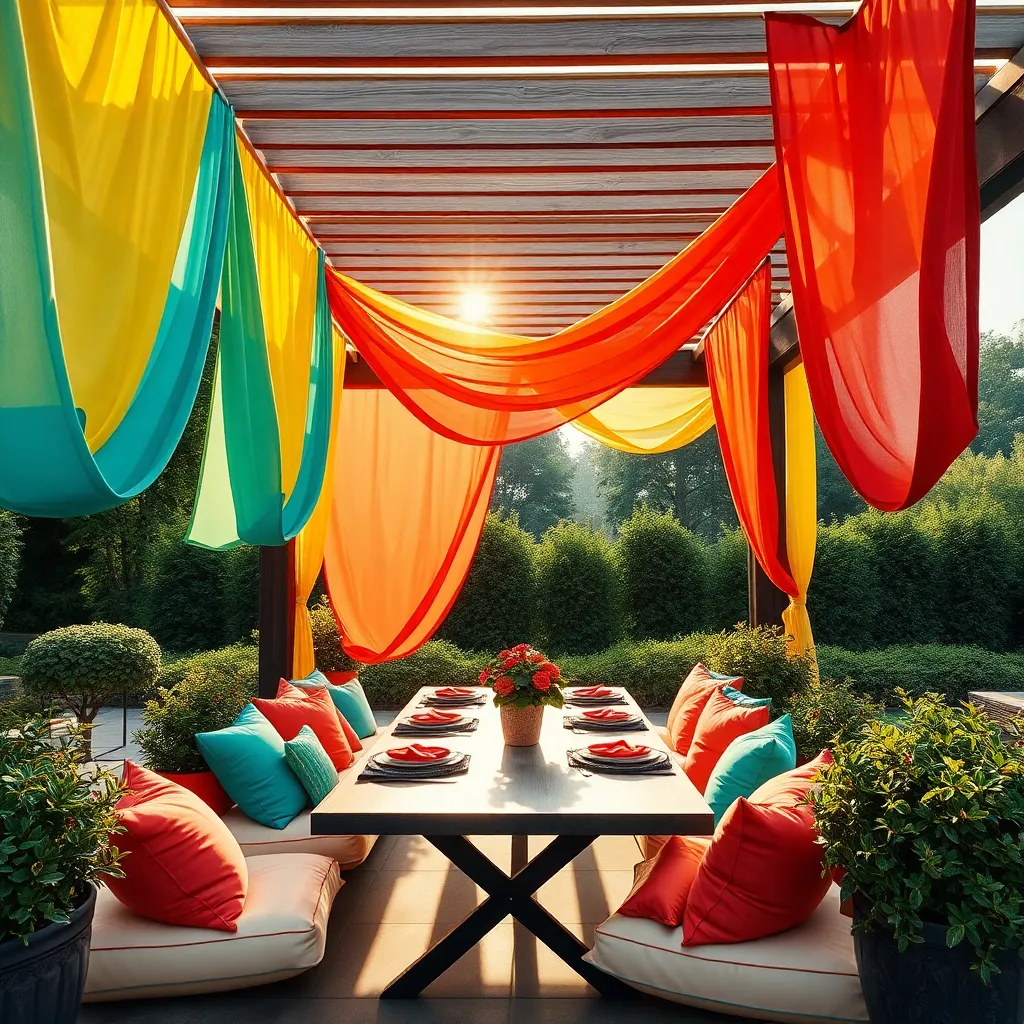
When selecting fabrics for your garden canopy, opt for vibrant weather-resistant materials that can endure various outdoor elements. Look for fabrics like acrylic or solution-dyed polyester, which are known for their durability and UV resistance. These fabrics not only stand up to sunlight and rain but also offer a splash of color, enhancing the aesthetic appeal of your outdoor space. Choosing colors that complement your garden’s natural hues can tie the entire area together, making it inviting and cohesive.
For a more advanced touch, consider using fabrics with integrated UV protection or those treated with water-repellent finishes to extend their lifespan. Measure your canopy area accurately to ensure you purchase sufficient material, adding a few extra inches for seams and draping. If you’re feeling creative, mix and match different colors or patterns to create a dynamic visual effect. Remember, a well-chosen fabric not only protects but also elevates your garden’s ambiance, encouraging you to spend more time outdoors.
Install Retractable Canopy Systems
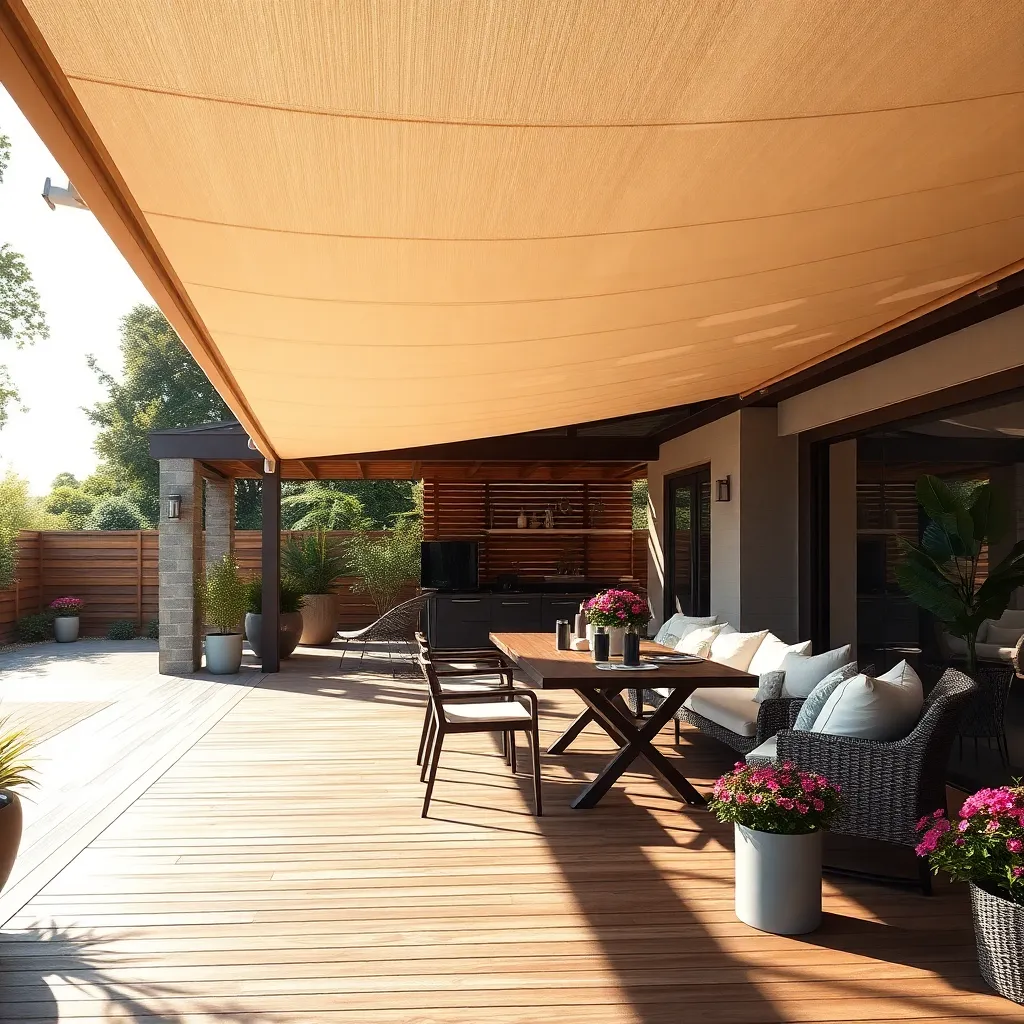
Retractable canopy systems offer a versatile solution for those looking to enjoy their garden in all weather conditions. These systems come in various designs and materials, allowing you to customize the perfect setup for your space. For beginners, consider using a straightforward, manual retractable awning with durable materials like aluminum frames and weather-resistant fabrics such as acrylic or polyester. These materials ensure longevity and protection from the elements, making them a worthwhile investment for any homeowner.
For those with more experience, consider integrating advanced features such as motorized controls or smart home compatibility to enhance convenience. When installing, ensure to allow a slope of at least 15 degrees to facilitate water runoff and prevent damage. Regular maintenance, such as cleaning the fabric and lubricating moving parts, will keep your canopy in top condition. With the right system, you can enjoy a shaded retreat that adapts seamlessly to your outdoor living needs.
Enhance with Climbing Plant Structures
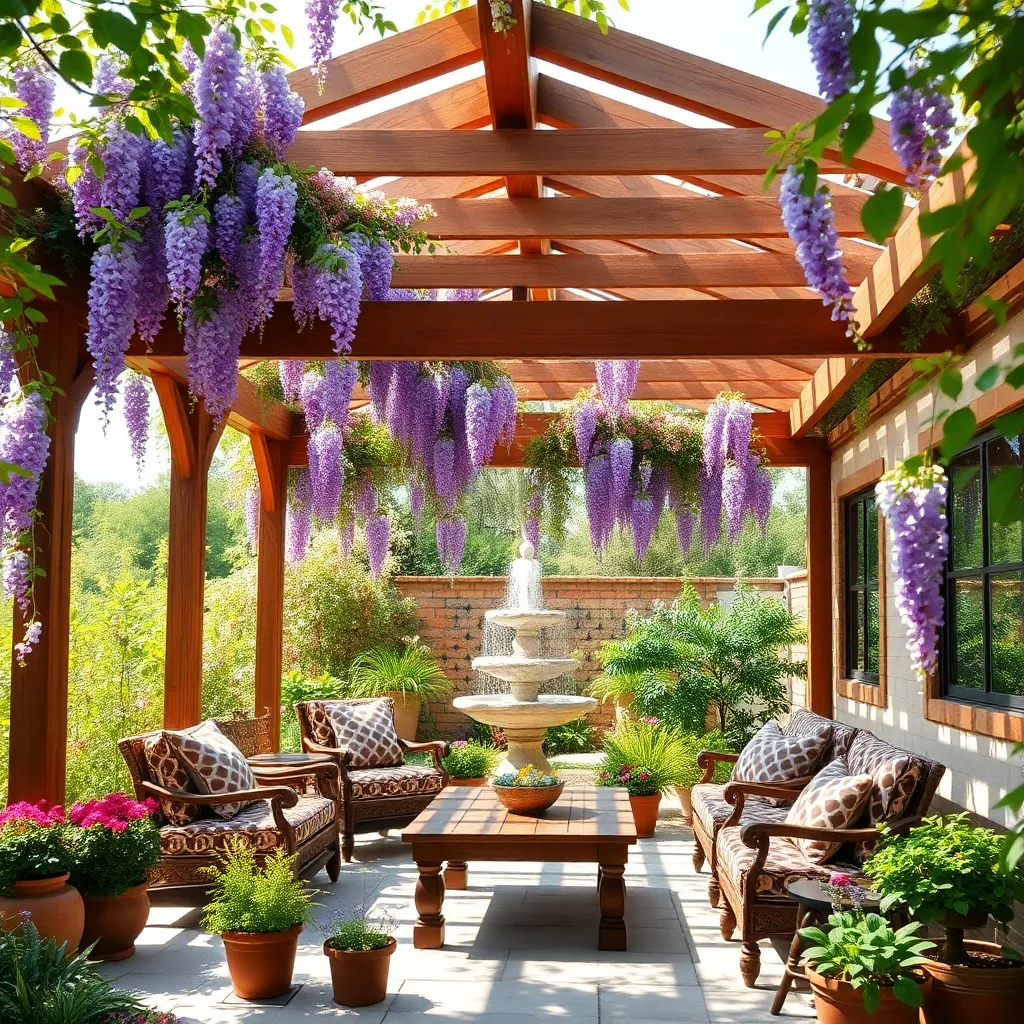
Transform your garden canopy by incorporating climbing plant structures, which not only add a natural touch but also provide additional shade. Start by selecting sturdy materials like cedar or galvanized steel for your trellises or pergolas, ensuring they can support the weight of mature plants. For beginners, consider easy-to-grow climbers such as clematis or honeysuckle, which are both attractive and low-maintenance. Securely anchor these structures in the ground to withstand wind and weather, and ensure they are tall enough—at least 6 to 8 feet—to allow your plants to climb naturally.
Strategically positioning climbing structures around your canopy can also create cozy, private spaces perfect for relaxation. For a more advanced project, train vines like wisteria or grapevines to form a living roof over your canopy. Regular pruning will be essential to maintain shape and prevent overgrowth. To enhance the aesthetic, intertwine fairy lights or hanging planters for added charm. Incorporating these elements not only enhances the beauty of your garden but also increases its functionality by providing dappled sunlight and a cooling effect. With the right approach, your garden can become a lush, inviting retreat.
Add Solar-Powered Canopy Lighting
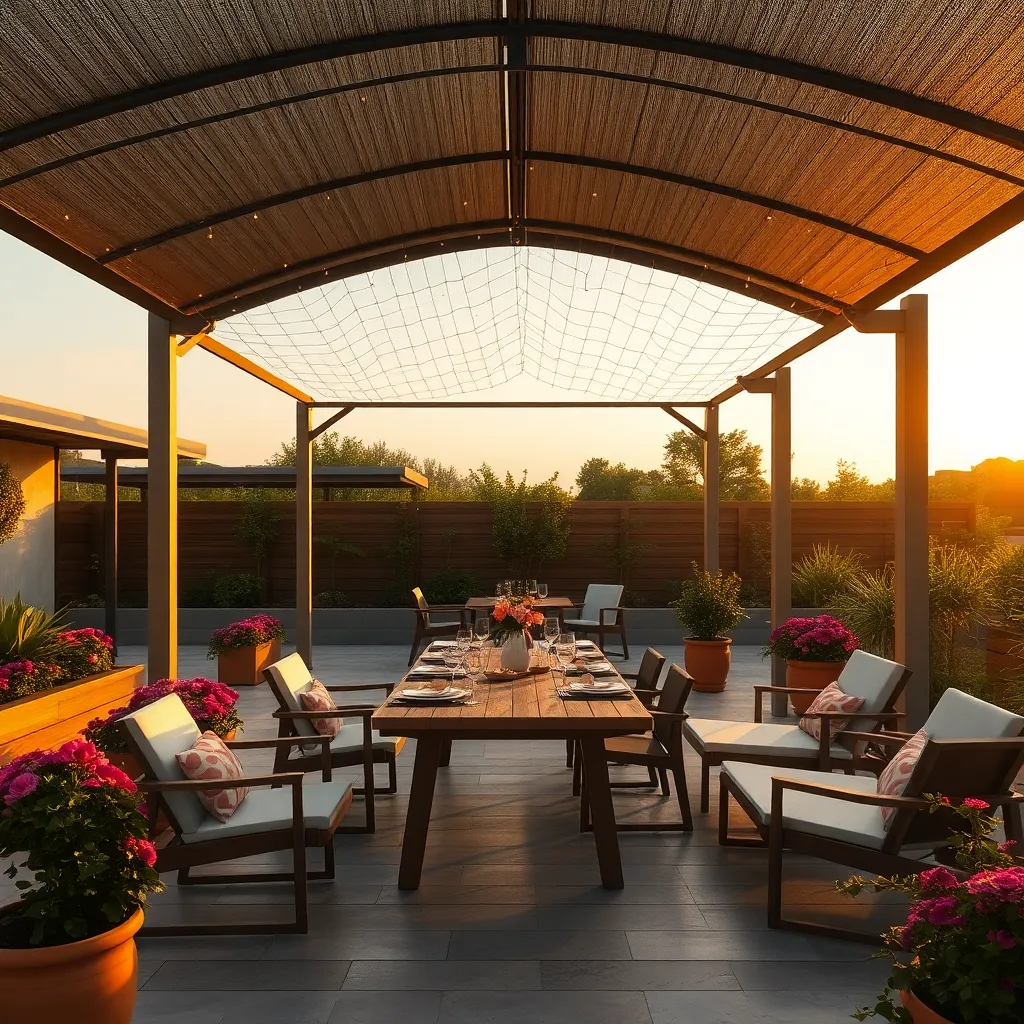
Transform your garden canopy into an enchanting evening retreat by adding solar-powered lighting. These eco-friendly lights are both practical and easy to install, harnessing the sun’s energy to illuminate your outdoor space without increasing your electricity bill. Opt for solar string lights or LED strips with a warm glow to create a cozy atmosphere. Simply attach them along the edges or drape them across the top of your canopy for an elegant effect.
For a more sophisticated touch, consider using solar-powered lanterns or hanging pendant lights. These can be strategically placed to highlight specific areas, such as a dining or seating space beneath the canopy. When choosing fixtures, ensure they are weather-resistant and designed for outdoor use to withstand various weather conditions. Advanced gardeners might explore options that include dimming features or smart controls for adjusting brightness remotely, enhancing both functionality and ambiance.
Design Multi-Level Canopy Layers
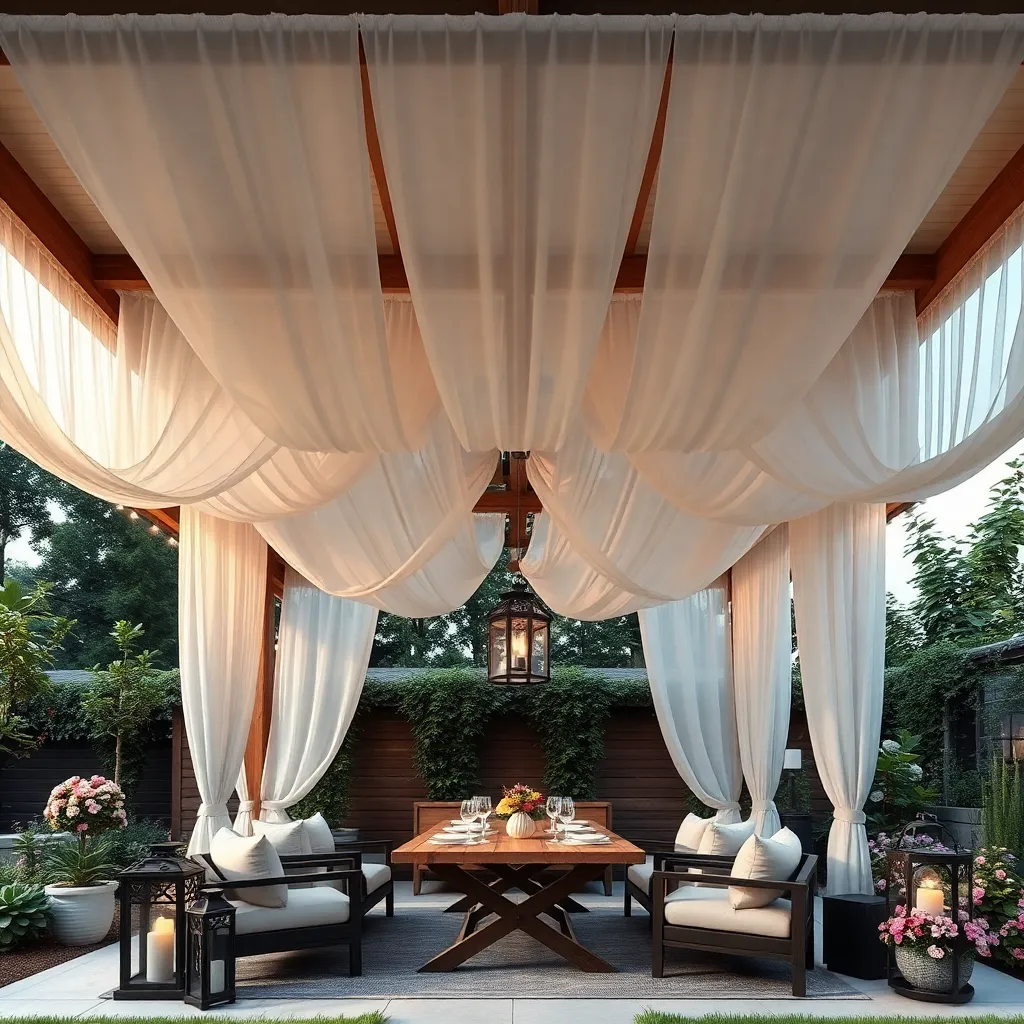
Creating a multi-level canopy adds depth and dimension to your garden, offering both visual interest and practical benefits. Start by using sturdy materials like weather-resistant fabric or treated wood at varying heights to craft layered canopies that provide shade and protection from the elements. Consider incorporating adjustable posts or cables to allow flexibility in height and angle, optimizing sunlight exposure and air circulation. This approach is great for beginners wanting to experiment with basic structures and for experienced gardeners looking to add complexity.
For a more advanced setup, integrate architectural elements such as pergolas or trellises for additional support and aesthetics. Use a combination of materials like bamboo, metal, and natural fibers to create a unique look that complements your garden’s style. Aim for a balance of open and closed spaces within your canopy design to cater to different plant needs and activities. To ensure stability, anchor the structures securely into the ground, and if using fabric, choose UV-resistant options to prolong their lifespan. This layered approach not only enhances your garden’s functionality but also elevates its overall appeal.
Opt for Freestanding Canopy Frames
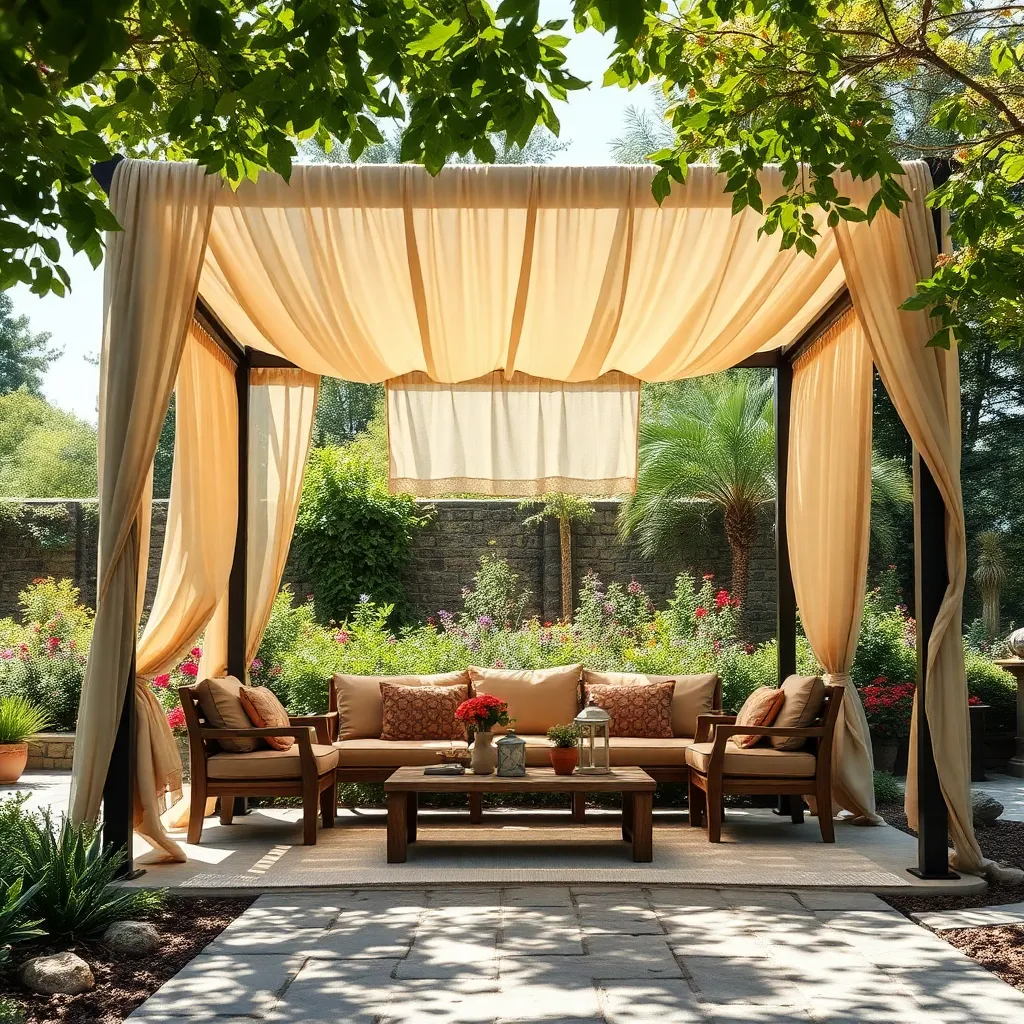
Freestanding canopy frames offer flexibility and convenience, making them an excellent choice for any garden. They are easy to assemble and dismantle, providing a temporary yet sturdy shelter option. Look for frames made of durable materials like powder-coated steel or aluminum to ensure longevity and resistance to weather elements. Ensure the frame’s dimensions suit your space, allowing for both functionality and aesthetics.
For a personalized touch, pair your freestanding frame with a weather-resistant fabric canopy. Choose fabrics such as polyester or canvas that are UV-resistant and waterproof to enhance durability. Consider adding side panels or mosquito netting for additional protection and comfort. For a more advanced setup, install adjustable canopy covers that allow you to control the amount of sunlight entering your space. This added versatility makes freestanding canopies a practical solution for any outdoor setting.
Conclusion: Creating Beautiful Outdoor Spaces
As we’ve explored in ‘8 Garden Canopy Ideas for Your Next Project’, creating a serene outdoor space can be a meaningful way to nurture your relationships. From the intimacy of a cozy pergola to the elegance of a sail shade, each canopy idea invites connection and shared moments. We’ve discussed how incorporating nature, adding personal touches, and considering practical elements like weather protection can turn your backyard into a sanctuary for growing bonds.
Now, take the next step by selecting one canopy idea that resonates with you and begin planning its implementation this weekend. Whether it’s a simple DIY project or a transformative garden makeover, starting this project can ignite renewed energy in your relationship.
Remember, the journey of enhancing your environment is as valuable as the destination. Bookmark this article to revisit these ideas and insights whenever you need inspiration. As you invest time and effort into creating a beautiful space, you also sow the seeds for deeper, more meaningful relationships. Embrace this opportunity, and look forward to the harmony and joy that a thoughtfully designed space can bring to your life and connections.
